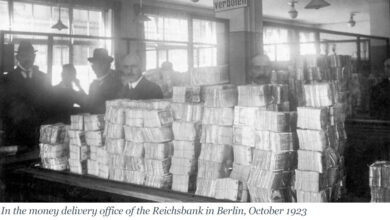

Overdraft credit, when banks and credit unions allow customers to spend more than their checking account holds, has many critics. One fundamental concern is whether overdrafts are salient—whether account holders know how often they overdraw and how much it costs them. To shed light on this question, we asked participants in the New York Fed’s Survey of Consumer Expectations about their experience with and knowledge of their banks’ overdraft programs. The large majority knew how often they overdrew their account and by how much. Their overdraft experience, we find, begets knowledge; of respondents who overdrew their account in the previous year, 84 percent knew the fee they were charged, roughly twice the share for other respondents. However, even experienced overdrafters were relatively unaware of other overdraft terms and practices, such as the maximum overdraft allowed or whether their financial institution processed larger transactions first.
Background
Overdraft credit was transformed with the advent of electronic debiting in the 1990s. Before then, bankers decided case by case whether to cover checks as a courtesy for trusted customers. As debit cards and automated teller machines (ATM) proliferated, banks began adopting automated programs that determine in real time whether to allow an overdraft. These “bounce protection” programs (so called after bounced checks) were marketed by industry consultants to banks and credit unions as a potential benefit to depositors and banks alike. Financial institutions can only cover overdrafts of customers who have opted into their overdraft program (see Dlugosz, Melzer, and Morgan for more on overdraft credit).
Overdraft Surveys
Overdraft credit is not tracked by the major credit bureaus, so most of what we know of it comes from surveys and focus groups. The Consumer Financial Protection Bureau (CFPB) held interviews and focus groups with thirty-six low- and moderate-income households about their experiences with overdraft credit, finding that “(m)any expressed confusion about overdraft coverage during and after account opening.”
Our findings are based on a larger sample of U.S. households that participated in the February 2022 SCE Credit Access Survey, a module of the Survey of Consumer Expectations. The survey covers a nationally representative sample of 1,100 U.S. household heads, of which roughly 1,000 responded. All but 2 percent reported having a checking account at a bank or credit union. In our discussion below, we use “bank” to refer to either banks or credit unions.
Overdraft Experience
We start by summarizing respondents’ experience with overdrafts over the previous year—how often they overdrew, and by how much. Almost four-of-five (78 percent) reported zero overdrafts over the previous year (see the first chart below, including the full survey question). This finding is consistent with other surveys showing that a small fraction of depositors pays the bulk of overdraft fees. Approximately half of all overdrafts reported were for less than $50, barely more than the typical overdraft fee these days (see the second chart below).
Thinking back over the past year (twelve months), about how many times did you overdraw your account?
Percentage of respondents
By how much did you typically overdraw your account (how negative was your balance on average)?
Percentage of respondents
Looking across respondents, we find that those who overdrafted more also tended to overdraw in larger amounts; the correlation was 0.36 and significantly different from zero. Overdraft fees are usually invariant to size, so this correlation implies that more frequent overdrafters receive somewhat more credit per fee.
Just 1.5 percent of respondents did not know whether they had overdrawn in the past year, and only 11 percent did not know by how much they had overdrawn. This finding suggests that the event of overdrawing, at the very least, is salient.
Expected or Accidental Overdrafts?
Are overdrafts always a surprise, or do account holders ever anticipate that a purchase will cause a negative balance? We asked respondents who overdrew in the previous year what fraction of the time they expected to do so (see chart below). The majority, 58 percent, said they never expected to overdraw, suggesting most overdrafts are accidental. We did find, however, that the fraction of expected overdrafts was significantly, positively correlated (at the 0.31 level) with overdraft frequency. This finding is in line with a recent CFPB study that found more frequent overdrafters were more likely to expect their most recent overdraft.
What percent of the time did you expect at the time of the transaction that you would be overdrawing your account?
Percentage of respondents
Overdraft Salience
We asked several questions to assess participants’ knowledge of the overdraft terms at their banks, starting with the most basic—the fee charged. The responses are summarized in the chart below. (We excluded the roughly 10 percent of participants who reported that their bank did not allow overdrafts for a fee.) Fully half of all respondents did not know their bank’s overdraft fee, a potentially worrisome finding (see the left bar in the chart). Notably, the knowledge gap was largely driven by respondents who had not overdrawn in the previous year (see the right bar). Among respondents who experienced an overdraft, 84 percent knew their bank’s overdraft fee. This finding provides some assurance that people prone to overdrafts will know what it will cost should they overdraft again.
What is the fee per overdraft at your financial institution?
Percentage of respondents
We see a similar, if less stark, pattern with overdraft limits, or the maximum overdraft that a bank allows (see chart below). Just 20 percent of respondents overall knew the limit, as compared to 39 percent of those with overdraft experience.
What is the maximum overdraft your financial institution allows (the overdraft limit)?
Percentage of respondents
Out-of-Order?
Some banks may clear customers’ largest transactions first, rather than in chronological order. Banks claim that reordering helps to ensure that customers’ rent or mortgage payments clear, but it can also increase the number of overdrafts.
As shown below, just 16 percent of respondents overall knew if their banks reordered transactions, and only 23 percent with overdraft experience knew. It is unclear, however, how prevalent reordering is today after a series of class-action lawsuits successfully challenged the practice.
Does your financial institution reorder transactions by clearing the largest payments first?
Percentage of respondents
Inattention
Inattention, a concept in behavioral economics, also arises in the context of overdraft credit; even if terms are salient, some depositors may not pay sufficient attention. Our survey gauged inattention by simply asking participants how much they cared about their banks’ overdraft policies. About 41 percent overall said the policies did not matter at all—in other words, the participants were indifferent (see chart below). By contrast, only about 10 percent of those with overdraft experience were indifferent.
How much do your financial institution’s overdraft policies matter to you?
Percentage of respondents
Summing Up
Whether overdraft policies are salient or shrouded is a key question in the debate about overdraft credit; high overdraft fees are particularly problematic if people don’t even realize they are paying them. Our findings suggest that basic aspects of overdraft are salient: people are well aware of how often they overdraw and how much it costs them. In general, we find that people with recent overdraft experience are more attentive to their institutions’ overdraft policies. However, even experienced overdrafters are unlikely to know if their bank or credit union reorders checking account transactions.

Donald P. Morgan is a financial research advisor on Banking Studies in the Federal Reserve Bank of New York’s Research and Statistics Group.

Wilbert van der Klaauw is the economic research advisor for Household and Public Policy Research in the Federal Reserve Bank of New York’s Research and Statistics Group.
How to cite this post:
Donald P. Morgan and Wilbert van der Klaauw, “Learning by Bouncing: Overdraft Experience and Salience,” Federal Reserve Bank of New York Liberty Street Economics, April 1, 2024, https://libertystreeteconomics.newyorkfed.org/2024/04/learning-by-bouncing-overdraft-experience-and-salience/.
Disclaimer
The views expressed in this post are those of the author(s) and do not necessarily reflect the position of the Federal Reserve Bank of New York or the Federal Reserve System. Any errors or omissions are the responsibility of the author(s).
Source link





